Posts Tagged: lygus
Paper: Evaluating the Utility of an Electrostatic Sprayer and a Tractor Mounted Vacuum for Lygus Management in Strawberry
Former UCCE Entomology Advisor Shimat Joseph and I just had the linked paper below published in Crop Protection.
Excellent overview of the lygus problem in California strawberries and evaluation of a combination of bug-vac use and the insecticide sulfoxaflor (not registered yet, but useful for this study since it actually works) for management of this pest.
A few points out of the paper to take back to the farm:
1- The use of the bug-vac alone was not sufficient to reduce lygus populations to below that of the untreated check.
2- Treatments using the insecticide sulfoxaflor alone and in combination with the bug-vac reduced the numbers of lygus and the number of cat faced fruit.
3- Neither the bug-vac or sulfoxaflor had any effect on predaceous heteropterans and spiders compared to the untreated check.
The implication out of this work and paper is that the use of an effective insecticide will continue to be the best tactic for control of lygus and mitigation of its damage in strawberries.
Link is here, it will be active until the beginning of October:
https://authors.elsevier.com/a/1XWqVxPFYekQG
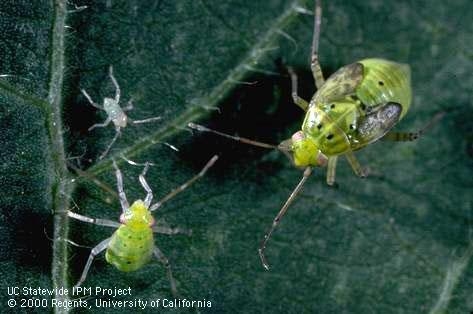
I-HM-LDES-NM
2016 Insecticide Efficacy Trial for Lygus Bug Control in Central Coast Strawberry
Lygus bug (Lygus hesperus) (Fig. 1) is a major pest of strawberry in the Central Coast. Lygus bug populations develop on weed hosts surrounding the strawberry fields such as wild radish, common groundsel, lupines, and mustards (Zalom et al. 2012). Time to time, adults migrate into the strawberry fields and lay eggs. Eggs hatch, and molt through five nymphal stages before molting into adults. Lygus bug feeding on the developing embryos affects the normal development of tissues surrounding the embryo (Handley and Pollard 1993) and affected fruits are misshapen often referred as “catfaced fruit” (Fig. 2) which are deemed unmarketable. Although both nymphs and adults can cause catface injury, nymphs are considered more destructive than adults. The young fruits up to ~10 days after petal fall are considered vulnerable to economic injury from lygus bug feeding (Zalom et al. 2012).
Chemical control continues to be an effective tool for lygus bug control and growers are always seeking effective and softer insecticides for its control. A replicated trial comparing the efficacy of insecticide treatments against lygus bug was conducted in first-year strawberry ‘San Andreas' in Watsonville, CA in 2016. The details on insecticide products and rates used in the trial are shown in Table 1. The insecticides were applied twice at 10 day interval using commercial tractor mounted sprayer. The water volume used for both the applications was 150 gal per acre and was applied at 140 psi. Dyne-Amic (surfactant) was added at 0.25% v/v to all the treatments. Insect samples were collected using regular sized Rubbermaid container by hitting 20 flowering strawberry plants with lid. In addition, 60 fruits were sampled from each plot to determine catface injury.
Pre-count sample did not show any difference in number of adult and nymphal lygus bugs among treatments (Figs. 3 and 4). Overall, all the insecticide treatments reduced the number of lygus bug adults and nymphs compared with untreated plants. The combination treatments using pyrethroid insecticides such as Danitol and Brigade suppressed lygus bugs and general predators such as bigeyed bug, minute pirate bug, and damsel bug as well as spiders (Figs. 5-8). Data show that reduced-risk insecticides, Rimon and Beleaf suppressed lygus bug nymphs as well. Sequoia, not yet registered on strawberry, provided a decent lygus bug control. Sivanto initially provided a good suppression of adults and nymphs but could not adequately sustain the control for more than a week. Two rates of Avaunt (unregistered insecticide on strawberry) was included in this experiment and were comparable to other effective insecticides in this experiment.
Insecticide use certainly reduced catface injury on strawberry fruit. Number of fruits with catface injury was lower in all the insecticide treated plants than untreated except the lower rate of Avaunt (Fig. 9). Catface injury on fruits treated with Sequoia was lower than untreated but not different from other insecticides (except lower rate of Avaunt).
References
Handley, D. T., and J. E. Pollard. 1993. Microscopic examination of tarnished plant bug (Heteroptera: Miridae) feeding damage to strawberry. J. Econ. Entomol. 86: 505-510.
Zalom, F. G., M. P. Bolda, S. K. Dara, and S. Joseph. 2012. Strawberry: Lygus bug. UC Pest Management Guidelines, UC ANR Publication 3468.http://www.ipm.ucdavis.edu/PMG/r734300111.html
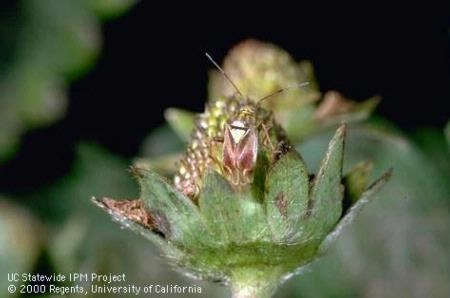
Figure 1: Lygus bug adult.
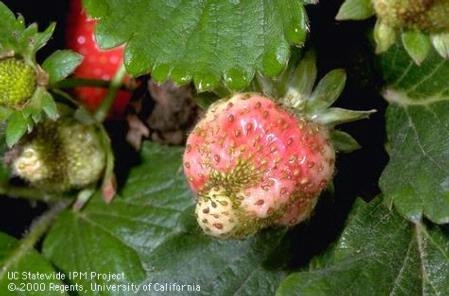
Figure 2: Catfacing of strawberry fruit.
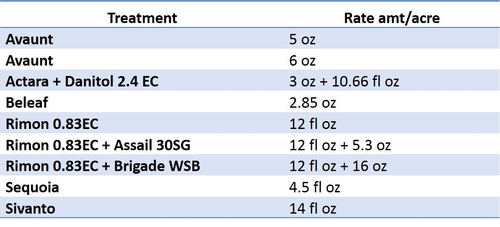
Table 1
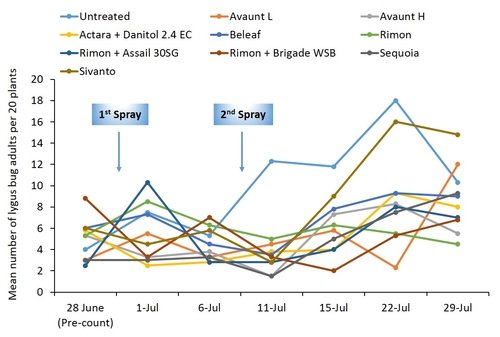
Figure 3. Mean number of lygus bug adults collected by week from treated plants.
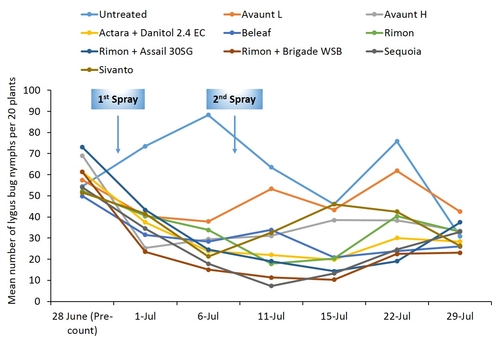
Figure 4. Mean number of lygus bug nymphs collected by week from treated plants.
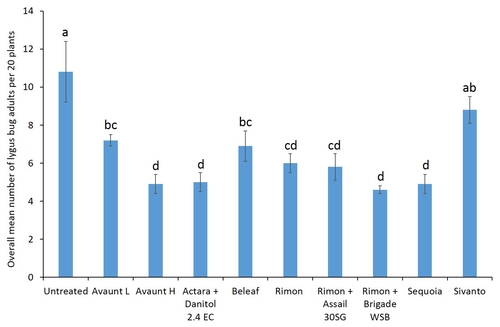
Figure 5. Overall mean number of lygus bug adults collected from treated plants.
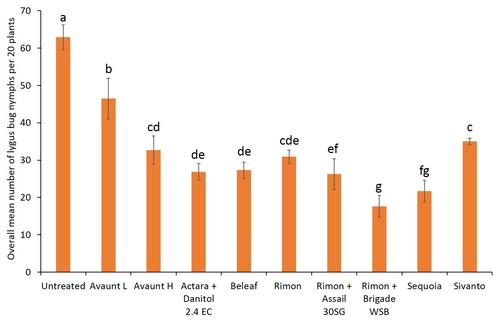
Figure 6. Overall mean number of lygus bug nymphs collected from the plants.
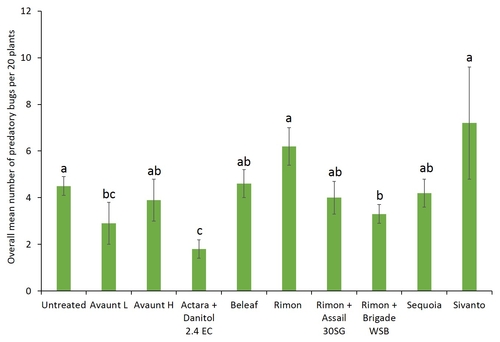
Figure 7. Overall mean number of predatory bugs collected from treated plants.
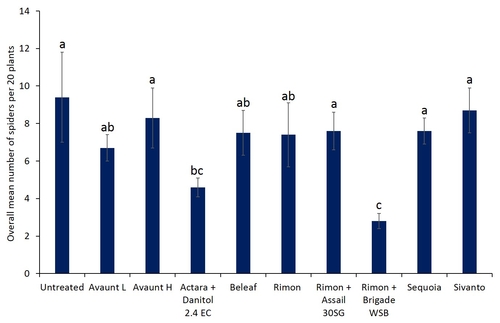
Figure 8. Overall mean of spiders collected from treated plants.
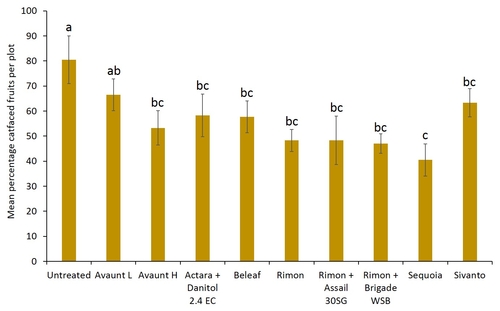
Figure 9. Percentage fruit with catface (lygus bug feeding) injury.
Strawberry Breakfast Meeting with a Focus on Lygus Bug April 14
Shimat, Pete and I are holding a grower breakfast this coming April 14. Place is the UCCE auditorium at 1430 Freedom Blvd, Suite E in Watsonville. Format will be an open discussion - it's a great opportunity to speak with some of the best in the business on lygus.
And of course enjoy a fine breakfast, courtesy of UC Cooperative Extension!
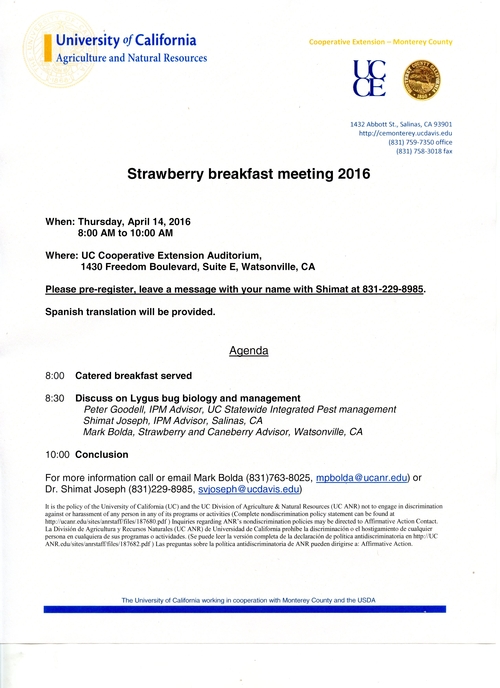
Strawberry Breakfast Meeting Focused on Lygus Bugs April 14, 2016
Integration of Vacuums with the Application of Insecticides for Management of Lygus in Strawberry
One of the missing variables from the vacuum work over the past few years for management of lygus in strawberry has been the use of insecticides which inevitably accompany their use on the farm.
Wait no longer. Colleague Surendra Dara from Santa Maria with some serious grower support did a large study integrating a slew of insecticides, from microbials to botanicals to synthetic chemistries with the use of vacuums.
It's a lot to go through, but one thing which stands out is that the vacuum on its own does not appear to be the top performer. It looks like it's best to be used with some of the sprays tested here.
Link here:
//ucanr.edu/blogs/blogcore/postdetail.cfm?postnum=19641
The Skinny on the Delayed Sulfoxaflor (Sequioa) Registration
Colleague Shimat Joseph and I happened into CDPR head Brian Leahy at an ANR meeting in Sacramento this past week, and as expected we got to talking about what the hold up is with the sulfoxaflor (Sequioa) registration for control of lygus on strawberries. Readers of this blog know that this is a pretty good material for lygus, and it's been a bit frustrating to not have the registration be approved yet.
Brian helpfully clarified to us that the approval for sulfoxaflor (Sequioa) was vacated in a Federal ruling by the US Court of Appeals for the Ninth Circuit in San Francisco in September.
The ruling was in regards to a lawsuit filed in 2013 against the US EPA, which is responsible for the registration of pesticides in the US (California has an additional layer of regulation through the CDPR), by the beekeeping industry which challenged EPA approval of neonicotinoids, of which sulfoxaflor was ruled to be a subclass.
This last point is arguable, since while sulfoxaflor targets the same receptors in the insect as a neonicotinoid, it belongs to a different class of chemistry, the sulfoxamines.
With regards to future registration of this product, the court said that the EPA "must obtain further data regarding the effects of sulfoxaflor on bees... before it grants approval."
The EPA has yet to formulate a response to this decision.

